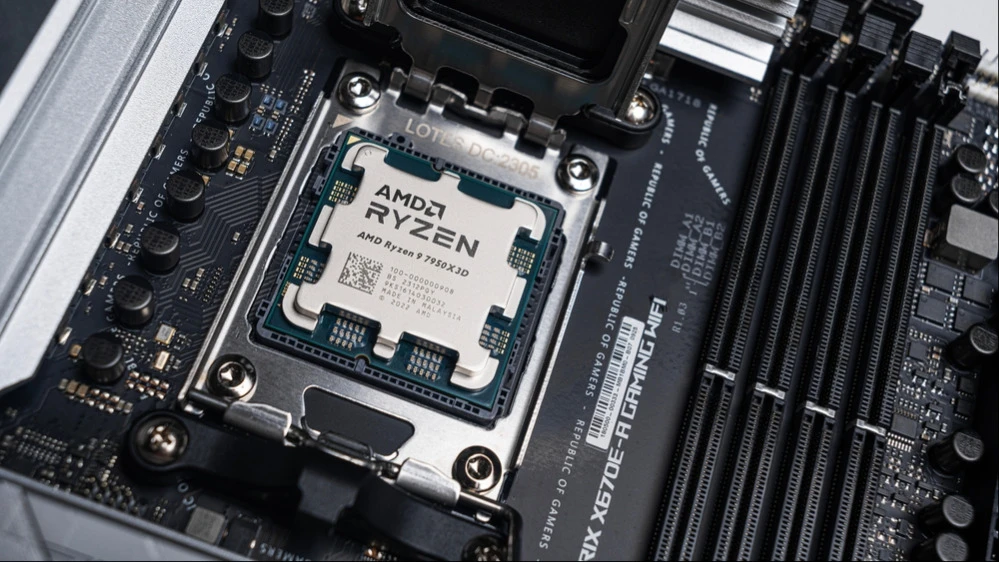AMD increased revenue and gave a better-than-expected forecast, but the stock fell. What does this have to do with China?
AMD's adjusted gross margin could have been 54% instead of 43% if not for U.S. export restrictions

AMD, the second AI processor player after Nvidia, fell short of analysts' profit forecasts, although its revenue rose by a third and exceeded Wall Street expectations. AMD shares, which have been the semiconductor sector's best performer in terms of growth this year, collapsed more than 5% in extended trading. Investors were caught off guard by uncertainty over the company's return to the key Chinese market: the chipmaker did not make any forecasts.
Details
Processor developer Advanced Micro Devices exceeded expectations on revenue for the second quarter. It rose 32% year-on-year to $7.69 billion, according to the report, published Aug. 5. Analysts were expecting $7.42 billion, cited CNBC's LSEG data.
But adjusted earnings per share failed to meet expectations. It decreased by 30% to $0.48, while Wall Street expected $0.49. At the same time, net income, which excludes all write-offs and expenses of the company, grew by 229% year-on-year to $872 mln, or $0.54 per share.
Sales in the data center segment, which includes AI chips, increased 14% year-over-year to $3.2 billion. This segment is still behind the client and gaming division, which added 69% to $3.6 billion in revenue.
In the current, third quarter, AMD expects sales of $8.7 billion (plus or minus $300 million), which corresponds to growth of about 28%. The forecast was better than analysts' expectations, who on average had anticipated $8.37 billion, noted Bloomberg. But it doesn't include revenue from the sale of AI chips to China: although the U.S. has eased restrictions on exporting processors to the country, AMD's license request is still under review, the company said.
How did the stock react
The price of AMD shares in extended trading on August 5 dropped by more than 6% - at the moment the price fell below $164. Prior to the publication of reports in the main trading, the securities fell 1.4% - to $174.3. Relative to the beginning of the year, they stand 44.3% more expensive: this is the best result in the semiconductor sector, Bloomberg reported. By comparison, the securities of Nvidia, the market leader in AI processors and the world's most expensive public company, have added 32.7% since the beginning of January.
Why investors have been left disappointed
Uncertainty about AMD's return to the Chinese market and the company's refusal to make any forecasts on this matter has become an unpleasant circumstance for investors, Bloomberg wrote. China is the largest market for semiconductors, and U.S. restrictions threaten to deprive AMD, as well as Nvidia, billions in potential revenue, the agency said.
"AI revenue declined year-over-year as U.S. export restrictions effectively nullified [processor] MI308 sales to China, and we began the transition to the next generation of chips," AMD CEO Lisa Su said during a conference call with analysts after the report (quoted by CNBC).
AMD's adjusted gross margin for the second quarter amounted to 43%. The company said that without export control costs, the figure could have been as high as 54%. AMD said the ban on sales of MI308 chips to China hit it $800 million, resulting in an operating loss of $155 million last quarter, wrote Yahoo Finance. By comparison, for the same reason, Nvidia reported $4.5 billion in write-downs in the first quarter and projected an $8 billion loss in the second quarter, the publication added.
Context
AMD is the second (after Nvidia) in the world in terms of supplying graphics processors that are used in data centers and provide the work of artificial intelligence. In addition, the company produces CPUs for servers, PCs and notebooks, competing with Intel, and graphics processors for gaming.
Although Nvidia holds the lion's share of the AI gas pedal market, major customers such as Meta and OpenAI are increasingly looking at AMD as an alternative to Nvidia's more expensive chips, especially for inferencing - interpreting and outputting data on demand from the user, CNBC reported.
AMD announced a new generation of Instinct MI400 AI chips this quarter, which are expected to hit the market next year. OpenAI CEO Sam Altman said the company plans to use them.
This article was AI-translated and verified by a human editor
